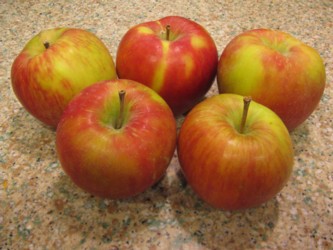breadsong's blog
An experiment with multigrain
Hello,
Today's bake was an experiment with multigrain, to see the difference between baking in a cold dutch oven, versus baking on my firebrick baking stone.
I've seen so many successful dutch oven bakes here on TFL - I wanted to give it a try!
The result: Very tasty! if not exactly pretty.
The baking stone loaf rose up an extra 1/2" compared to the 'cold dutch oven' loaf, which spread out more & didn't have as much oven spring/bloom from scoring.
Blueberry Maple Walnut Spelt Bread
Hello,
I tried making Karin's Dinkel Walnussbrot and really enjoyed the texture and flavor of this bread.
Thank you, Karin, for your recipe and technique!!!
I wanted to try making Spelt bread again - I saw these recipes, that used blueberries (yum!) as an ingredient:
Shao-Ping's Caramelized Hazelnut and Blueberry Spelt Sourdough
and Farine's Apple Blueberry Bread with Spelt
Bara Brith
Hello,
Awhile ago I'd found elra's post on wildyeastblog.com about Bara Brith - I've been wanting to try making this lovely-sounding fruit-and-spice Welsh 'speckled' bread ever since.
I've got Elizabeth David's English Bread and Yeast Cookery on loan from the libary; there's a recipe for Bara Brith in her book too.
This is my variation of Bara Brith, based on elra's and Elizabeth's.
I was delighted with the light, cakey, tender and flavorful! result:
Mr. Reinhart’s Bagels – with cheddar cheese
Hello,
Recalling Larry's wonderful cheese bread that we liked so much, I wanted to make [color=orange]cheddar cheese[/color] bagels (my husband's favorite bagel). We enjoyed these for breakfast today...so nice to have these warm treats on a cold, snowy day!
I followed Mr. Reinhart's Bagel formula in BBA, but added 172g of grated sharp cheddar to the flour mixture when mixing the dough.
I kneaded the dough by hand, and the some of the grated cheddar was still visible in the dough before baking.
Luminita Cirstea’s Raisin-Rye (courtesy of farine-mc)
Hello everyone,
Farine featured Luminita Cirstea in a 'Meet the Baker' post on her website.
Ms. Cirstea's courage, hard work, commitment and talent are so inspiring!
I so wanted to try making Ms. Cirstea's delicious-looking (and prize-winning!) Raisin-Rye bread.
With thanks to Farine for writing about Ms. Cirstea, and thanks to Ms. Cirstea for her efforts to develop this formula!
SFBI Teff Miche - 1.5kg
Hello, I was poking around the pastryna.com website, where they make available back issues of their magazine.
I was delighted to find an article written by my SFBI Weekend Baguette class instructor, Frank Sally, on baking with Teff (in a WFO):
http://www.pastryna.com/DigitalEdition/Digital_NA_10_1.html (The SFBI Teff Miche article starts on page 26).
(David, if you're out there, this one's for you!)
Apple Bread
Hello, I wanted to try making Apple Bread again, after seeing Larry's recent Odds and Ends post (thank you Larry) (and because I was able to find Honeycrisp apples at the market!). 
I made this bread combining elements of Mr. Hamelman's Normandy Apple Bread, and Mr. Kastel's Apple Bread. With many thanks to Mr. Hamelman and Mr. Kastel!
I wanted to try mixing the final dough without water, to try and get as much apple flavor as possible in the bread
For our dinner guests (and Daisy_A!)
Hello,
Many thanks to Daisy_A for her wonderful posts:
Sourdough Wholemeal Lemon Bread, and Mexican Chocolate Crackle Cookies!
I wanted to bring some flavors to the table that remind me of sunny places, as it's been rainy and wet where I live for quite awhile. Daisy_A's recipes seemed perfect and lovely to share with our dinner guests.